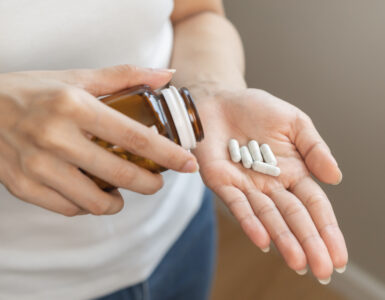Changing weather, hot sun and even summertime foods cause people to have more headaches this season than during the rest of the year. The nitrates from cured meats can trigger a migraine so people can get one while eating at backyard bar-b-quest serving hot dogs and sausages. Dehydration from the heat and humidity, or even just the sun’s glare, can also bring on a headache. It can help to go to bed and wake up at the same time every day, and never skip meals.
Seasonal affects are just one of the many questions that surround this day-to-day pain. Dr. Brett Parkinson with Mountain Medical dives into the head-splitting information.
TENSION HEADACHE
• Most common headache, accounting for majority of all primary headaches.
• More common in women than men.
• Constant ache and tightness around the forehead, temples, or back of head and neck. Some people experience jaw discomfort.
• Suffer
ers often describe the tightness as a “vice grip.”
• Pain is mild to moderate.
• May last anywhere from 15 minutes to several days
• Unlike migraines, not associated with nausea, vomiting, abdominal pain, weakness, sensitivity to light/noise or numbness.
• At one time thought to be caused by muscle contraction of the face, neck and/or scalp. Recent research suggests may be caused by an alteration in certain brain chemicals, like serotonins or endorphins.
• Treatment: Usually responds to over-the-counter medications like aspirin, ibuprofen or Tylenol. Severe or chronic tension headaches may require prescription painkillers. CAUTION: Should limit painkillers to no more than 2 days/week. Overuse of pain meds may cause rebound headaches.
• Prevention: Regular exercise, stress management, good posture. In select cases, antidepressants may be used.
MIGRAINE HEADACHE
• An extremely painful, debilitating headache which is pulsating/throbbing, usually unilateral (one-sided) and is associated with sensitivity to light. Often associated with nausea, w/or w/o vomiting
• May be associated with an aura (classic migraine), a sensory warning sign consisting of sparkling flashes of light, zigzag lines in visual field and/or slowly spreading blind spots. In addition, one may experience tingling in one arm or leg and occasionally weakness or language or speech problems.
• Associated with intolerance to light, sound and even some smells.
• Usually involves the frontal or temporal regions.
• If untreated, may last from four to 72 hours.
• Patient often seeks out quiet, dark place to rest. Prefers remaining still.
• More common in women than in men.
• 28 million Americans suffer from migraines. Up to 17% of women and 6% of men have experienced at least one migraine. 80% have family history.
• Typically begin in childhood, adolescence or early adulthood. Rarely begin after age 50.
• Disruptive, often interfering with life’s routine activities and responsibilities
Cause: The traditional view was that migraines resulted from a spasm of the blood vessels in the brain and that the pain was caused by subsequent dilatation. Now there is evidence that stimulation of the trigeminal nerve can activate serotonin receptors, resulting in pain along the distribution of the nerve. This basically includes the face and head.
A number of migraine triggers have been identified. The following list is not exhaustive.
Triggers:
• Hormonal Changes: Fluctuations in estrogen. Migraines often occur just before or during menstruation, corresponding to a drop in estrogen. Birth control pills and hormone replacement therapy may worsen migraines.
• Foods: Aged cheese and other tyramine-containing foods (red wine, some processed meats); alcohol; food additives (nitrates and nitrites); fermented, pickled or marinated foods; caffeine; and MSG (monosodium glutamate).
• Stress
• Sensory Stimuli (bright lights, sun)
• Changes in wake-sleep patterns
The treatment of migraines is sometimes straightforward, as many cases will respond to simple pain-relieving and preventative medications. However, many cases are refractory to first-line treatments, requiring experimentation with various drug regimens. Most migraines, however, can be ultimately controlled.
Pain-relieving medications:
• Nonsteroidal anti-inflammatory drugs (aspirin, ibuprofen)
• Triptans (Imitrex, Maxalt, Amerge, Zomig, Axert, Frova and Relpax)
• Anti-nausea drugs (Reglan)
• Opiates (Narcotics)
Preventive medications:
• Cardiovascular drugs (beta blockers, calcium channel blockers)
• Antidepressants (tricyclics, SSRIs)
• Anti-seizure drug (Topomax, Neuontin)
• Botox Injections
CLUSTER HEADACHES
• Rare
• More common in men. Most common between ages 20-40.
• Occur in cyclical patterns or clusters
• Frequents attacks which may last from weeks to months (usu 2 to 12 weeks), followed by periods of remission
• Most sufferers experience one cluster period/year
• Extraordinarily painful, though not life-threatening. Described as sharp, penetrating or burning. “Hot poker stuck in eye.”
• Strikes quickly, without warning. Usually just involves one side of head.
• Patient restless. Prefers to pace back and forth, rather than lie still
• May scream, bang head against wall–anything to distract from the unbearable pain.
• Often triggers excessive tearing and redness of the eye on side of pain. May also see reduced pupil size, drooping eyelid and face swelling–all on affected side.
Treatment:
• Conventional headache medications not always helpful, as pain may subside before they take effect
• Inhalation of 100% oxygen through a mask provides dramatic relief
• Tryptans
• Surgery: Cutting or “burning” trigeminal nerve
• Nerve Stimulation: Implantable occipital nerve stimulator
THUNDERCLAP
• Sudden, severe headache which peaks within 60 seconds. May have severe underlying cause, like bleeding into the brain: subarachnoid hemorrhage (between membranes covering brain and brain itself), “worst headache of my life”; intracerebral hemorrhage; aneurysm; clot in sinus of brain; or carotid artery dissection.
• SEEK MEDICAL ATTENTION FOR ANY HEADACHE THAT COMES ON SUDDENLY AND SEVERELY
• Often need imaging for diagnosis: CT Scan, MRI
• May need spinal tap (subarachnoid hemorrhage) or cerebral angiogram (aneurysm)
SINUS HEADACHE
• Membranes of sinuses become swollen and inflamed.
• Patient feels pain, pressure, and fullness in cheeks, brow or forehead. Worse when bending forward.
• Other signs and symptoms: yellow-green discharge, sore throat, fever, cough
• Diagnosed with CT scan–fast, easy
• Treatment: Antibiotics
MENINGITIS
• Inflammation of the meninges, or covering of the brain
• In addition to headache, other worrisome symptoms include: stiff neck, fever, lethargy, irritability, confusion and rash
• THIS IS A MEDICAL EMERGENCY
BRAIN TUMOR
• Most common and usually first symptom is headache, often worse in the morning.
• Other symptoms depend on location of tumor, and include personality changes, memory impairment, difficultly concentrating, visual changes, auditory hallucinations; problems with balance, speech.
• Diagnosis often made with CT scan or MRI















Add comment